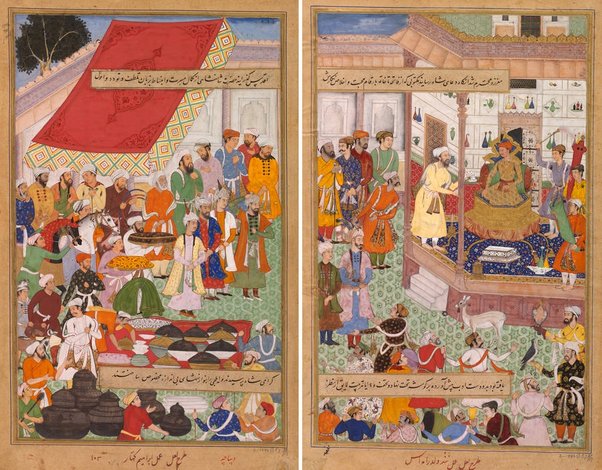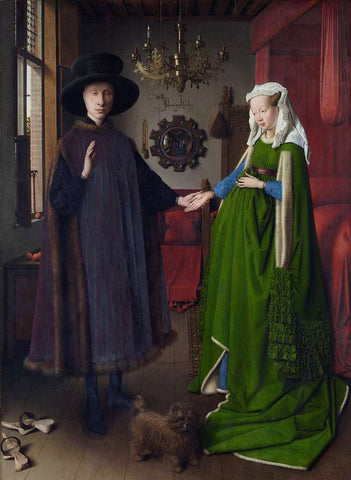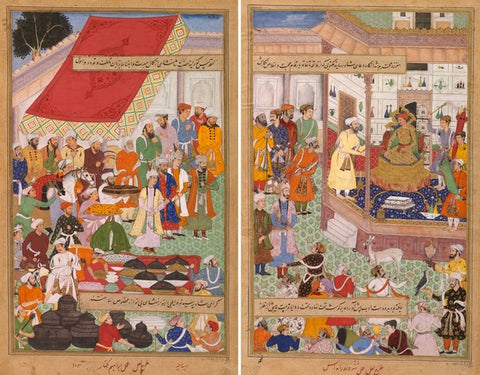Tu carrito está vacío
Free Shipping on orders $499+
Proudly Made In Massachusetts! ![]()

Everyone should have a favorite painting, sort of like having a favorite book or a favorite TV show. Even if it's something you don't know much about. Or you only like the way it looks but couldn't name the artist. Or if you can only describe it as "the one with the sunflowers."
Everyone probably has a favorite piece of art that they love to look at when they accidentally encounter it in the wild, but they don't know much beyond that.
If that's you, then this article is for you. We're going to give you a basic art history crash course so you can be a little more knowledgeable when selecting a piece of art for your Sony Frame TV.
Imagine being able to showcase a world-famous piece of art on a high-resolution screen and surrounded by a museum-quality art frame from Deco TV Frames. You could have your favorite sunflower painting in your living room, looking like it belonged in a museum.
(And for the record,Vincent Van Gogh painted a total of 11 sunflower paintings, so if you like sunflowers, it's probably one of his.)
Here are seven important periods of art for you to consider for your Sony Frame TV.
Art in the Middle Ages was influenced mostly by the Catholic church, so it focused mainly on religious stories from the Bible. Paintings of this time were rather flat, but they used bright colors to tell stories about Jesus, Mary, and the Saints. They weren't meant to be realistic, but rather, their purpose was to tell stories about the Bible to a population that was largely illiterate.
 Early on, artists were inspired by Roman and Byzantine styles, and a "Romanesque" style emerged, using thick outlines, bold figures, and elongated figures, sort of like stained glass windows. Around the 12th century, the "Gothic" style became more popular as the art incorporated more realistic figures, detailed drapery, and increased focus on light and shadow.
Early on, artists were inspired by Roman and Byzantine styles, and a "Romanesque" style emerged, using thick outlines, bold figures, and elongated figures, sort of like stained glass windows. Around the 12th century, the "Gothic" style became more popular as the art incorporated more realistic figures, detailed drapery, and increased focus on light and shadow.
While religious themes dominated, some medieval art depicted everyday life, like scenes from hunting or feasting. Overall, the artistic purpose of the era was to glorify God and religious figures, using art as a teaching tool.
The Arnolfini Portrait by Jan van Eyck (painted in 1434) shows a married couple in their Flemish home. But there aremany more notable paintings from this time period you should be aware of.
The Renaissance brought about a rebirth of interest in humanist ideals and classical art, and it broke away from the religious themes that had been popular in the past. Artists like Leonardo da Vinci, Michelangelo, and Raphael focused more on using realistic techniques, like perspective to paint scenes that look more realistic and with depth.
This made figures and scenes look more three-dimensional. Renaissance artists embraced naturalism and began depicting human anatomy and emotions more realistically. They also focused on capturing light and shadow as a way to give their paintings feelings of drama.
But they didn't break completely away from their religious themes: their Biblical figures were shown with more human emotion and realistic proportions — not the bold colors and elongated forms of the Middle Ages artists.
The most famous painting to come out of this time period is also one of the most famous paintings in the world:Mona Lisa by Leonardo da Vinci.
The Europeans were not the only ones creating art in the world. They were also creating beautiful works in India under the Mughal Empire, blending elements of Indian, Persian, and Islamic traditions.Mughal paintings are known for their bright and vivid colors and detailed illustrations — there's a lot going on in many of the Mughal paintings. The subjects tend to focus on portraits, historical scenes, and studies of nature.
Mughal artists used a technique called "wash painting" as a way to create lifelike skin tones. They also used gold leaf to highlight details on clothing, jewelry, and architectural elements. It was a way of adding a touch of luxury and a burst of color.
Emperors often commissioned portraits of themselves and their families lounging in beautiful gardens or in grand court scenes. They also wanted to see historical events, such as battles, celebrations, or even diplomatic meetings, as well as paintings of natural beauty, like trees, plants, and flowers, or scenes inspired by mythology and religious texts.
One notable Mughal painting is titled "Akbar Receives The Iranian Ambassador Sayyid Beg in 1562," which goes to show that even diplomatic events were worthy of capture by the Mughal artists.

While Europe was in its Renaissance, Japan had its own artistic movement called Ukiyo-e ("pictures of the floating world"), or woodblock prints. They were actually around as early as the eighth century as a way to share texts like Buddhist scriptures, but it wasn't until the 1700s that new technology made it possible to print single sheets in a variety of colors.
Woodblock artists carved scenes of everyday life onto wooden blocks, showing landscapes, actors, and geishas. The prints showed the essence of the "floating world," which was a term for the entertainment districts of Edo (modern-day Tokyo), filled with well-known theaters, beautiful geishas, and famous kabuki actors. They wanted to show off the pleasures of the entertainment that could be found in Edo.
In the past, printmakers could only work in a single color and painted in additional colors by hand. With the new technology, the first multi-color prints were calendars printed for a group of wealthy patrons. The artists would draw a particular scene on a piece of paper, and it would then be carved onto separate wooden blocks, one for each color. Printers would then use the blocks to apply different pigments, layer by layer. If you ever saw a modern print shop before the 1990s, this is how they did multi-color prints until the creation of color printers.
Artists like Katsushika Hokusai, known for the iconic "The Great Wave off Kanagawa" — another world-famous piece of art and a woodblock print — were masters of the Ukiyo-e style.
French artists like Monet and Renoir wanted to capture the feeling of a scene rather than perfect details. That is, they wanted to give animpression of a scene, not an exact representation of it. So they used short, light brushstrokes to paint landscapes and everyday moments without focusing on portraying things exactly as they were — think sketch versus photograph.
The Impressionist movement flourished in France and it, more than almost any other artistic movement since the Renaissance, revolutionized how artists portrayed the world around them. Rather than capturing realistic details and ideal forms, they were more interested in the fleeting effects of the atmosphere.
So artists like Claude Monet, Pierre-Auguste Renoir, Vincent Van Gogh, and Edgar Degas painted outdoors to paint in the open air ("en plein air").
Impressionist artists were often criticized for their lack of sharp details in their work, but the style caught on in Europe and pushed other artists toward a sensory experience of the world, focusing on the subjective rather than the objective.
It also led the way for future art movements like Post-Impressionism, which paved the way for an even more expressive and subjective approach to art.
Starry Night (Vincent Van Gogh), A Sunday Afternoon On The Island Of La Grande Jatte (Georges Seurat), Luncheon of the Boating Party by (Pierre Auguste Renoir), andWater Lilies (Claude Monet) are allexamples of some of the world's most famous Impressionist paintings.
Mexican Muralism painted large-scale paintings on public buildings as a way to tell stories about Mexican history, culture, and social issues immediately after the Mexican Revolution which took place in 1910 – 1920.
The "muralistas," led by the"Three Great Ones" — Diego Rivera, David Alfaro Siqueiros, and José Clemente Orozco — used vibrant colors and bold figures as a way to educate and inspire the public with powerful social and political commentary. They wanted to tell the story of Mexico and highlight the struggles of the working class, indigenous heritage, and the fight for social justice.
By painting the murals on government buildings and schools, they made the art available to everyone, especially the people whose stories were being told. It was a way to inform and educate to a population that couldn't necessarily read. It's a far cry from the art commissioned by wealthy patrons and Indian emperors and only seen by a select few.
Mexican muralism was about more than just aesthetics. It was and is a testament to the power of art to create dialogue, raise awareness, and become a seed of change. Those messages and ideas are often found in murals painted around the world.
One famous example of these fantastic murals is Diego Rivera'sDream of a Sunday Afternoon in Alameda Central, which showcases a fantastical scene of Mexican history and culture with famous figures strolling through a park, like Frida Kahlo, La Catrina (the Skeleton), Sor Juana (a seventeenth-century nun and one of Mexico’s most notable writers, and Porfirio Díaz, whose dictatorship inspired the Mexican Revolution.

Pop Art exploded onto the American and British scene in the 1950s and 1960s with the rise of the Beat culture and 1960s counter-culture. Rather than being serious and introspective as centuries of past art had done, Pop Art embraced themes of popular culture, consumption, advertising, and mass media.
Artists like Andy Warhol and Roy Lichtenstein blurred the lines between "high art" and "low art," and incorporated everyday objects, celebrities, and comic book characters into their work. Warhol's 32 Campbell's Soup Cans or Roy Lichtenstein's comic book style are prime examples. Pop Art wasn't just about creating art, it was a commentary on mass consumerism, celebrity culture, and the influence of mass media on the world.
Warhol used mass-production techniques like silkscreen printing — another multi-step color layering process like the Ukiyo-e woodblock printers used. His portrayal of mass culture objects or celebrities like Marilyn Monroe challenged our notions of the artistic value of these everyday objects. To elevate a soup can to high art was certainly a new idea to many people!
Lichtenstein's art used thick black outlines and primary colors, as well as the "Ben Day dots" printing technique gave his work a comic book look that created a sense of comic book nostalgia, even as the "single panel" paintings told a story without giving the viewer any context of what happened before or after the work we were viewing.
Check out our article, Four Famous Masterpieces: Deco TV Journeys From Van Gogh's Starry Night to Warhol's Soup Cans, for more information on Warhol's famous soup cans.